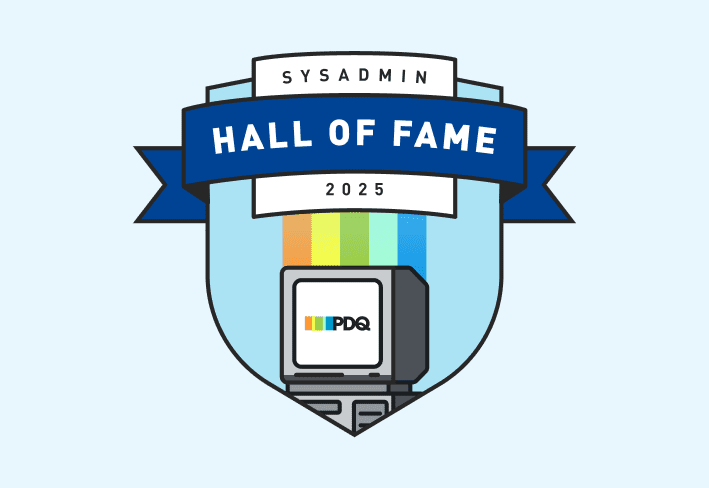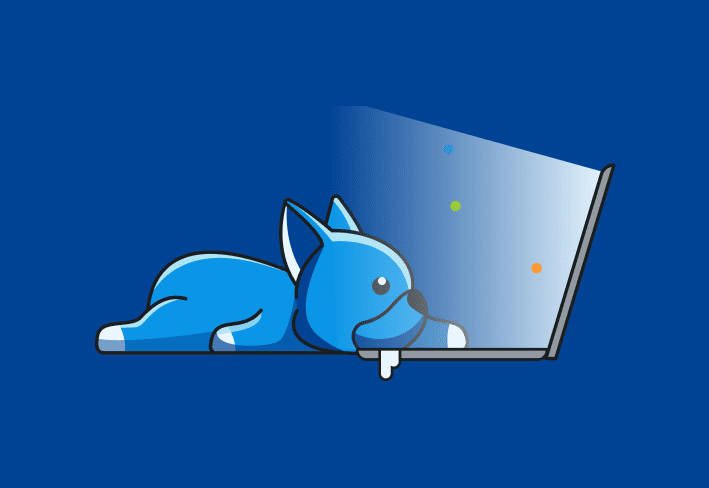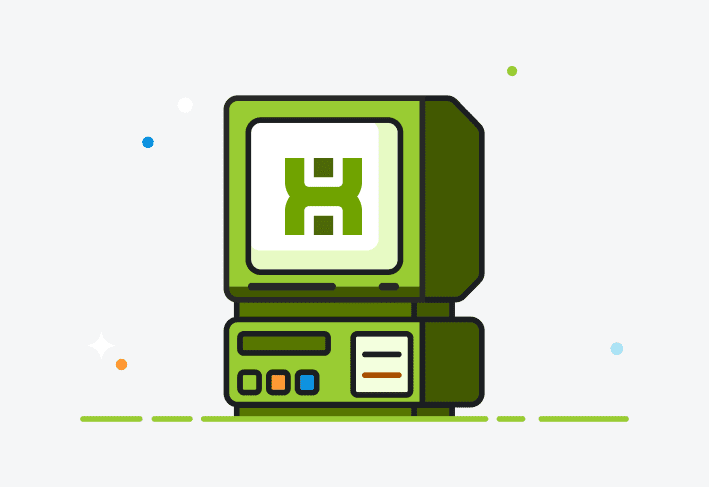If everything is running smoothly and you haven't heard a peep from your IT team in weeks, congratulations! You may be benefiting from the quiet brilliance of a good sysadmin. There’s only one problem: When things are quiet, it's easy to forget the magic behind the curtain. And when things go loud (e.g., an outage, a breach, a catastrophic user error), IT suddenly finds itself in the spotlight. And not the good kind.
We asked a few seasoned sysadmins what leadership could do better to retain great IT talent. The TL;DR? Retention doesn't have to be complicated. But it requires some honest introspection and a willingness to start and stop certain behaviors.
Know a rockstar sysadmin?
Nominate them for the first-annual PDQ Sysadmin Hall of Fame. Submit your nomination by July 11, 2025.
What sysadmins wish you knew
Sysadmins don't spend their days simply turning things off and on again (though that’s usually on the docket somewhere). They’re problem solvers, planners, translators, and therapists — and that's just their before-lunch duties.
Think about this classic paradox, courtesy of Corey, a solutions engineer at PDQ:
“When everything is running like a well-oiled machine, everyone questions what they’re paying IT for. When everything is on fire and the IT department is working to get everything back up and running, everyone questions what they’re paying IT for.”
And all too often, their work is misunderstood or even ignored. Tara, a content engineer at PDQ, points to a major disconnect:
“Leadership wants to be in a multiplatform environment without staffing accordingly.”
That leaves IT teams under-resourced, overextended, and prone to burnout.
Jansen, a sysadmin at PDQ, adds another overlooked aspect: soft skills.
“How important soft skills are and how frequently they are used isn’t always obvious to leadership teams.”
Yet navigating tough conversations, calming panicked users, and diplomatically handling sudden fires? That’s a day in the life.
Sysadmins wear a lot of hats — sometimes all at once. But when their work goes unnoticed (which usually means it’s going well), it’s easy for leadership to underestimate what it takes to keep things running.
The big misses? Understaffing, unclear expectations, and overlooking the people skills that make sysadmins effective in the first place.
If you want your IT team to succeed, treat them like the strategic humans they are — not just background noise with admin privileges.
Recognition that actually works
Yes, pizza is nice. So is the occasional meme in Slack. But if you really want to keep great sysadmins, appreciation must go beyond carb-filled (but delicious) calories and surface-level kudos.
What moves the needle is consistent, meaningful recognition. It’s the difference between “thanks for fixing that printer” and “thanks for quietly preventing a week-long outage.” One feels transactional. The other builds trust, loyalty, and empathy.
Even smaller gestures count, as Corey states:
“Saying ‘thank you’ if I help with an issue really goes a long way.”
It might sound basic, but appreciation — when it’s consistent and sincere — builds trust.
And that trust? It keeps people around.
In fact, research backs this up: According to a Gallup study, employees who receive regular recognition are more than twice as likely to say they’ll stick with their employer long-term.
And the most effective recognition? It’s timely, specific, and personal. That means a generic “employee of the month” plaque in the breakroom won’t cut it. But a manager publicly calling out a sysadmin’s clever scripting that saved three hours of downtime? That sticks.
Recognition doesn’t have to be grand. It just has to be real.
Respect the role — and the person
You know what doesn’t keep people around? This:
“‘I made [IT] get me this Mac cause my kids said it was the best.’” — Tara, content engineer
This real-life quote that Tara has heard in her career is a perfect example of leadership overreach (and, frankly, poor reasoning). These kinds of power plays create tension across departments and alienate IT teams who already juggle too much.
Another cited pet peeve: blurred lines around support. Corey says one big improvement would be leadership helping prevent boundary-crossing from end users (not that that happens often ...):
“It's so helpful when leadership teams ensure department leaders know to train their staff on formally submitting support requests instead of waiting for an IT person to walk by and then grabbing them while they’re in the middle of something else.”
Jansen agrees:
"It makes me feel valued when users go through proper channels to submit tickets/requests for help. It is not always easy or convenient to respond to direct messages or 'walk-ins.’”
What to start, stop, and continue doing
What should leadership actually do to support sysadmins? Here are a few suggestions from our sysadmins at PDQ.
Start:
Respecting IT budget as an investment, not a burden
Providing project opportunities that grow skills and keep work engaging
Looping IT in on decisions early (not just to clean up after them)
Stop:
Treating support tickets like interruptions instead of the actual job
Micromanaging (if you hired smart people, let them do their thing)
Rewarding performative leadership over real collaboration
Continue:
Saying thanks
Giving recognition when it’s due
Creating a culture that encourages improvement and growth
Retain the brain behind the network
Sysadmins don’t need a throne. But they do need support, respect, and a workplace that sees them as more than just the people who fix printers.
Want to keep your best folks? Build an environment where they can actually thrive.
And only when you’ve got those bases covered, consider throwing a pizza party now and then for a job well done. After all, a sysadmin’s gotta eat, too.




